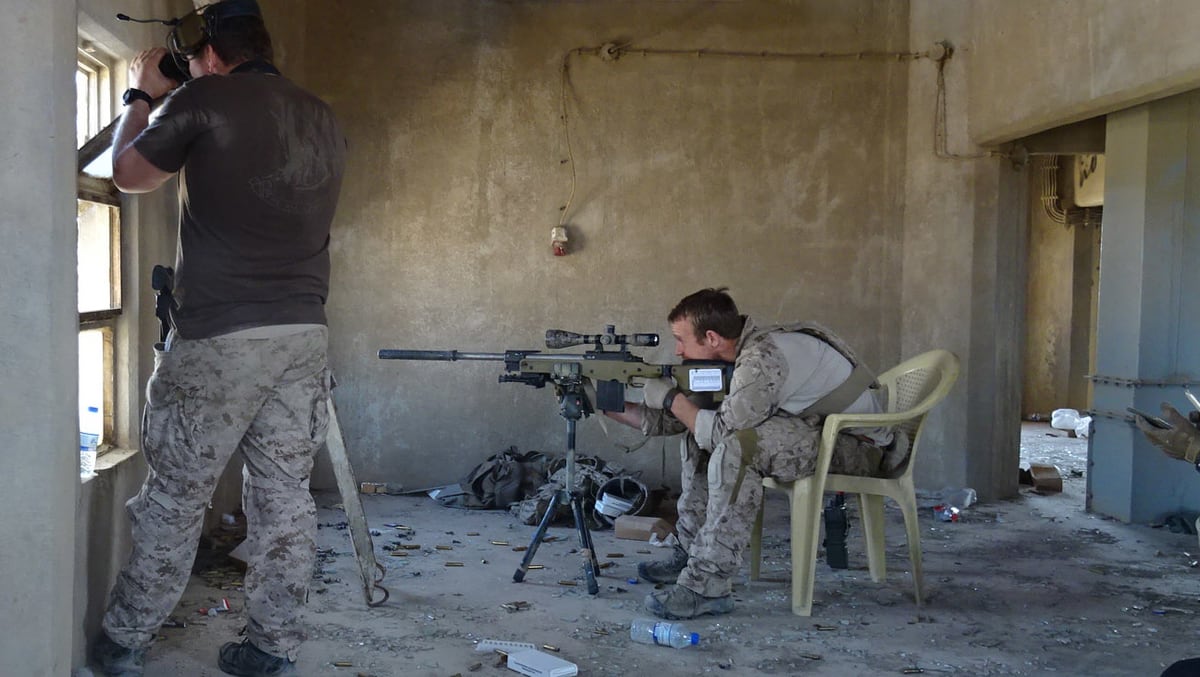On April 10, 2018, Naval Special Warfare Operator 1st Class Craig Miller sat down in an interview room in San Diego.
Naval Criminal Investigative Service Special Agent Joseph Warpinski introduced himself and his partner, Seth Goodwin. He told Miller he was “going to take some bio information for you” but first he wanted to explain what was about to happen.
He didn’t say that nearly a week earlier Cmdr. Kevin Golden, the Staff Judge Advocate General at Naval Special Warfare Group 1, had reported allegations of war crimes committed during a 2017 deployment to Iraq by Chief Edward Ryan “Eddie” Gallagher, the senior enlisted sailor in Alpha Platoon, SEAL Team 7.
Those accusations included the possible stabbing to death of a seriously wounded teenage prisoner of war who had fought for the Islamic State in Mosul.
Instead, Warpinski began the interrogation of Miller by telling him that everything he’s about to say will be filed under a “source number” — and “won’t go into a case file” — and “our reports are going to reflect that,” according to a recording of the NCIS interview obtained by Navy Times.
“It’s not like they could look at this recording or interview or anything like that,” Warpinski said.
Yet 14 months later, Miller’s name peppers the pages of numerous public legal filings in two war crimes cases and he’s slated to become the star witness for the prosecution on Wednesday, two days after jury selection begins in Gallagher’s court-martial trial.
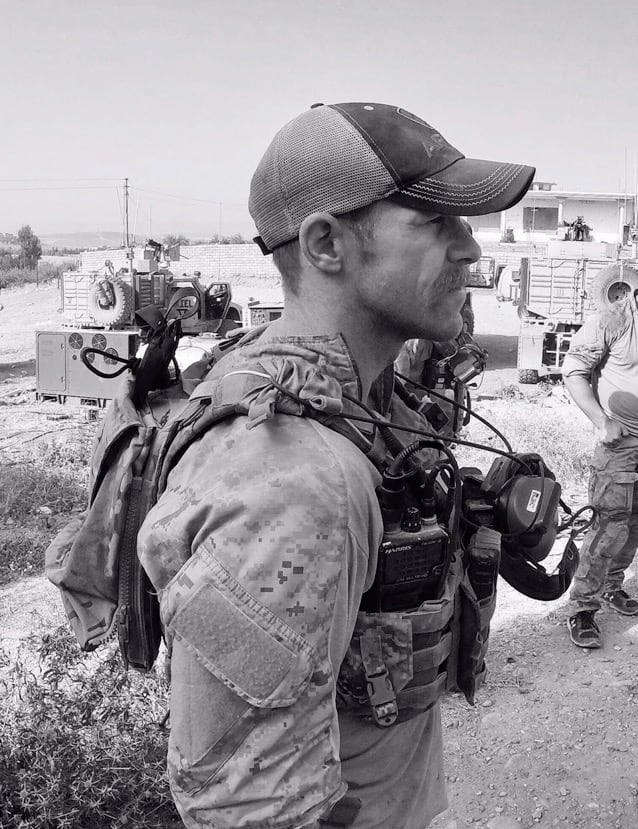
As the 2018 interview unfolded, Miller made a number of claims.
He told the special agents that nearly a year earlier, on May 3, 2017, he saw a lightly wounded Islamic State fighter brought into the SEAL compound near Mosul. He described the prisoner as conscious, not combative, with no apparent injuries to his throat.
Miller said that he left the scene, returning minutes later to see the detainee on the ground and Gallagher plunging a knife into his neck, a fellow SEAL SO1 Corey Scott “freaking out a little bit over what Eddie just did.”
That became the basis of Gallagher’s premeditated murder charge but Miller continued with more allegations of the senior enlisted SEAL shooting at innocent civilians with his sniper rifle — although Miller also conceded he didn’t witness any of that.
On Friday, Navy Times contacted both Miller and Warpinski in San Diego to ask them about that fateful moment that kicked off a criminal probe by NCIS that’s turned SEAL Team 7 upside down and shined an international spotlight on American military operations in Iraq.
Now a chief, Miller declined comment.
Warpinski never responded at all.
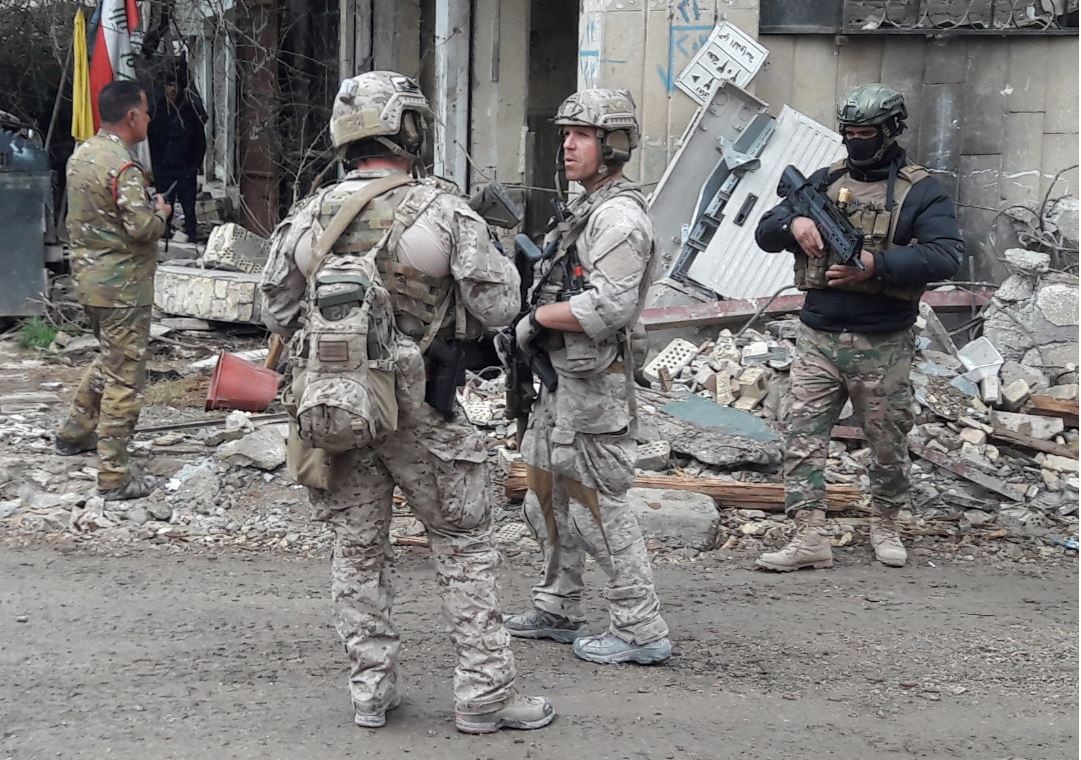
Citing constitutional violations committed against Gallagher, 40, by NCIS and a government attorney tied to a warrantless spying operation on defense lawyers and Navy Times, Navy judge Capt. Aaron Rugh removed lead prosecutor Cmdr. Christopher Czaplak from the case.
He also yanked Gallagher from restricted quarters — President Donald J. Trump already had freed the SEAL from pretrial confinement in San Diego’s Naval Consolidated Brig Miramar.
And then Rugh made it easier for his lead civilian defense attorney, Timothy Parlatore, to pick a panel more favorable to Gallagher, who steadfastly has professed his innocence.
In the wake of Czaplak’s demise, another deputy was pulled for other reasons.
Gallagher’s prosecution is now overseen by Cmdr. Jeffrey Pietrzyk, who was transferred hastily to San Diego from Washington.
Before he was booted by the judge, Czaplak offered Parlatore a plea deal, agreeing to cap the SEAL’s prison term on the murder charge at 25 years.
Parlatore told Navy Times he rejected both Czaplak’s offer and a Saturday afternoon bid from Pietrzyk for Gallagher to cop to a manslaughter charge and await a potential pardon from Trump.
Parlatore predicted the combat-hardened veterans on the military jury will exonerate Gallagher, who insists a tiny cabal of Miller-led “Mean Girls” in his former platoon failed to tell NCIS investigators the full story about what really happened in Iraq in 2017.
“If you look at communications between them and their SEAL command early on, they wanted Gallagher to go away, but not in a way that would’ve had to have gone forward as a criminal case,” Parlatore told Navy Times. "They were using the weapon of the rumor mill, generalized statements without having to put their names on anything.
“When that didn’t work, they were coached by their command on what was needed, and that’s how we ended up here.”
Naval Special Warfare officials have declined to weigh in on those issues but instead blasted Navy Times for finally revealing the names of Miller and other SEAL witnesses who are scheduled to testify against Gallagher.
“I’m not going to comment on information that has been provided outside of the courtroom proceedings,” wrote Naval Special Warfare spokeswoman Cmdr. Tamara Lawrence in an email to Navy Times.
“While we realize some names will become public in the courtroom, to release them prior to the proceedings is irresponsible. As a matter of security we do not release names of special operators as it potentially endangers current and future missions, the operators themselves, their teammates and their families.”
Navy Times told Lawrence and other Navy officials last month that once the case was set for trial, this publication and others would stop cloaking the names of witnesses, a policy that applies to every other military court case.

Parlatore believes the SEALs who went after Gallagher had a number of motives for bringing the chief down, including derailing his advancement to senior chief and a proposed Silver Star medal for combat valor.
Others seemed to want to get him fired from a training position Gallagher held, according to legal filings provided to Navy Times.
“They wanted Gallagher removed,” Parlatore said on Saturday. “Reputations are everything on the SEAL Teams, and they were worried about what he would tell people about their performance in Iraq.
“He was calling them ‘cowards’ in country, mostly just to motivate them to get off their asses and fight, and they resented that and worried he’d do that in California — that what happened on deployment wouldn’t stay on deployment.
"They didn’t understand that he wasn’t going to do that.”
Parlatore suspects that after NCIS started interviewing them they began to realize that they were stuck with stories they had to repeat, or face charges for lying to investigators.
And then on Jan. 22, military prosecutors indicted Alpha Platoon’s officer in charge, Lt. Jacob “Jake” Portier, for allegedly helping to cover up Gallagher’s misconduct, accusations the Navy officer also strongly denies.
“Jake is collateral damage and they didn’t want to become collateral damage themselves,” Parlatore said.
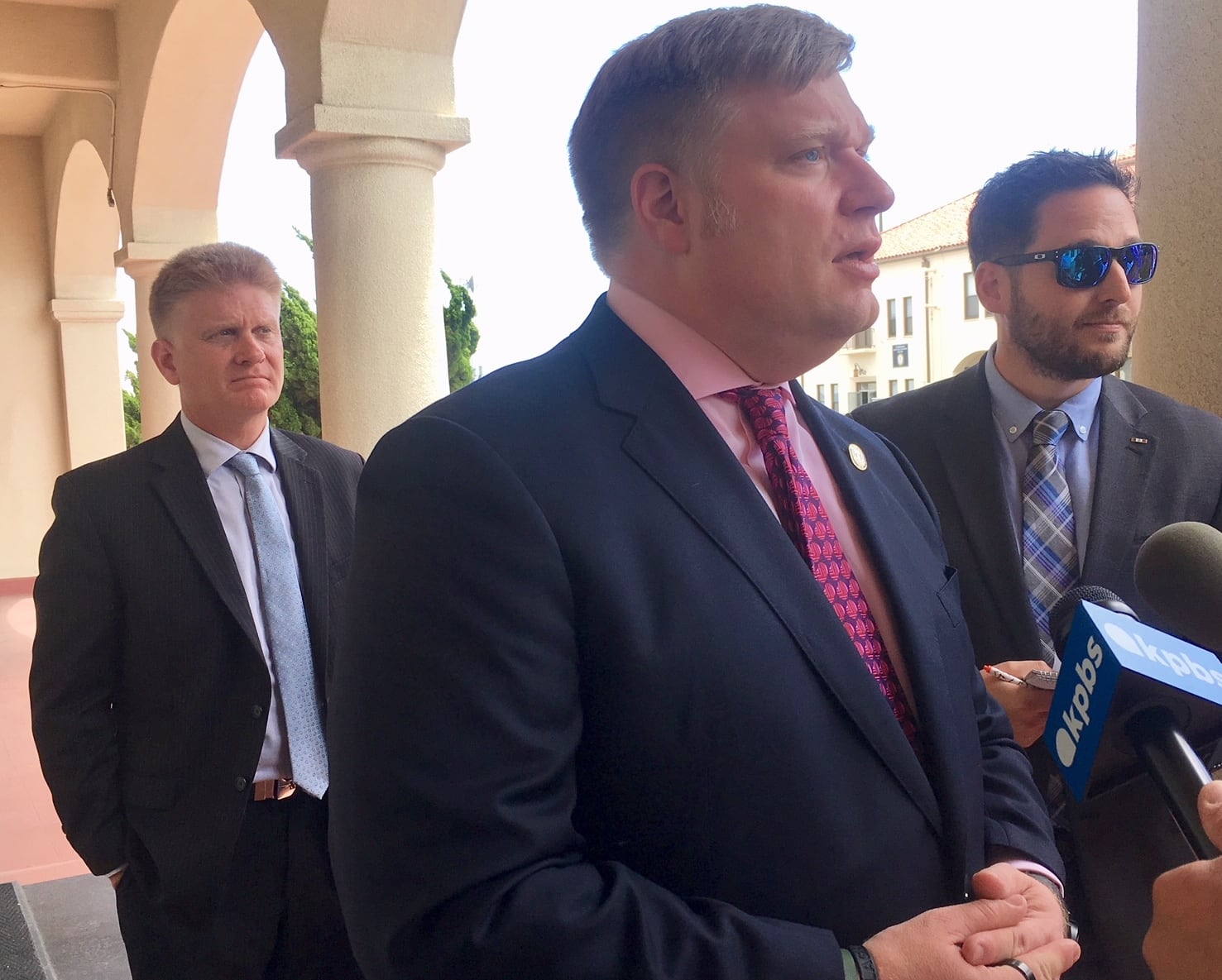
A former Surface Warfare Officer, Parlatore plans to personally cross-examine Naval Special Warfare Operator 1st Class medic Terrance “TC” Byrne; SEAL snipers SO1 Dalton Tolbert, SO2 Joshua Vriens, and SO1 Dylan Dille — now a civilian — plus one of their junior officers, Lt. Tom MacNeil.
The Navy and U.S. Department of Justice provided them immunity deals against prosecution in exchange for their testimony against Gallagher and Portier.
“This is a case that never should’ve been brought in the first place,” Parlatore said. "The prosecution and NCIS utterly failed in their duties to properly investigate this case and find the truth. Because of their failures, an innocent man is going on trial.
“But we’re confident that the jury will see the truth and Eddie Gallagher will be found not guilty. The days of these witnesses hiding in the shadows to try to destroy their chief’s life with their lies are over and they now have to answer for their false statements.”
Reached by Navy Times, Byrne declined comment. Tolbert and Dille didn’t return messages and neither did the military attorney who represents Vriens.
Michael Hanzel, a former Navy attorney now in private practice specializing in military cases, said that he’d make a statement on behalf of his client MacNeil later.
Only Miller and Byrne allegedly witnessed portions of Gallagher’s interaction with the prisoner. The rest are expected to testify about the alleged shootings and accusations that Gallagher sought to cover up the crimes.
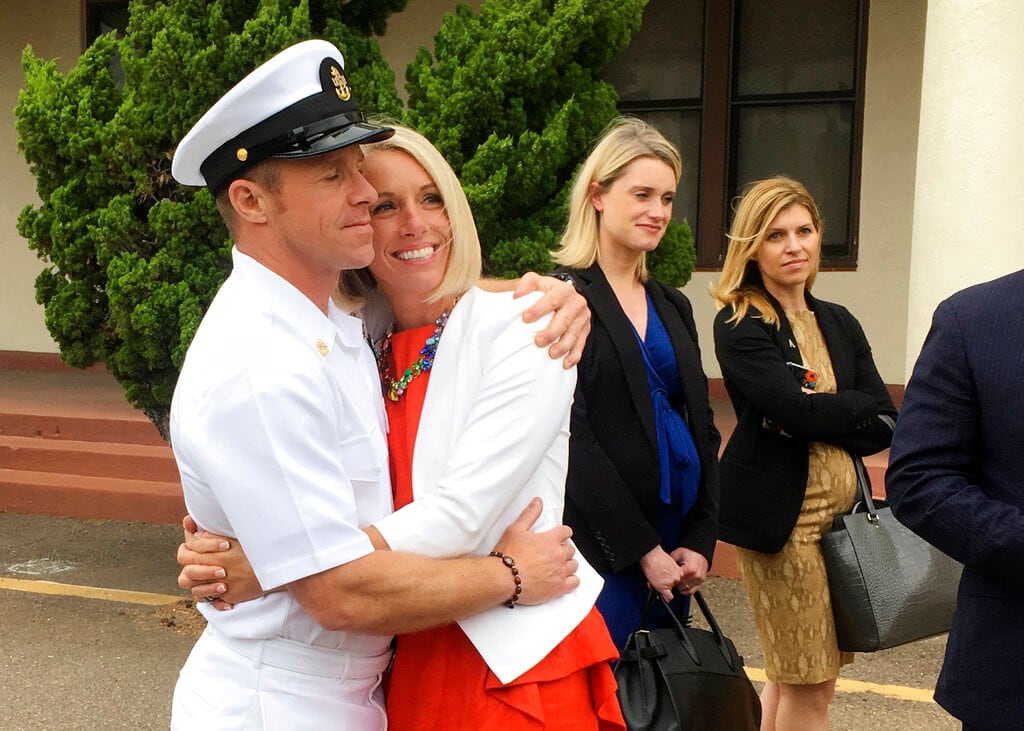
According to legal filings provided to Navy Times, it appears that the new prosecution team will lean heavily on photos taken shortly after the prisoner’s death.
One shows Gallagher holding the teen’s hair and brandishing a knife and the other depicts the chief re-enlisting near his remains.
They’ll also bring up a text message Gallagher sent that seems to suggest he slayed someone with a knife, talk Parlatore has written off as the sort of “dark humor” shared between combat veterans.
Gallagher made no effort to hide the knife or its sheaf. Trace analysis of the blade turned up only a skin cell, not blood, that could belong to a Middle Eastern man, according to court filings.
No DNA was found in the leather carrier, where any blood should’ve dripped, Parlatore added.
No bodies of any alleged victims were unearthed so no autopsies were performed.
Digital videos of the Islamic State fighter were recorded before he died, but the helmet camera was turned off at a key moment in the footage and someone deleted multiple files that should’ve contained other images.
In their legal filings, prosecutors have only said that they can’t locate the missing files and haven’t suggested a motive for why they were destroyed.
Gallagher’s legal team believes the footage likely exonerated him, which is why the evidence disappeared.
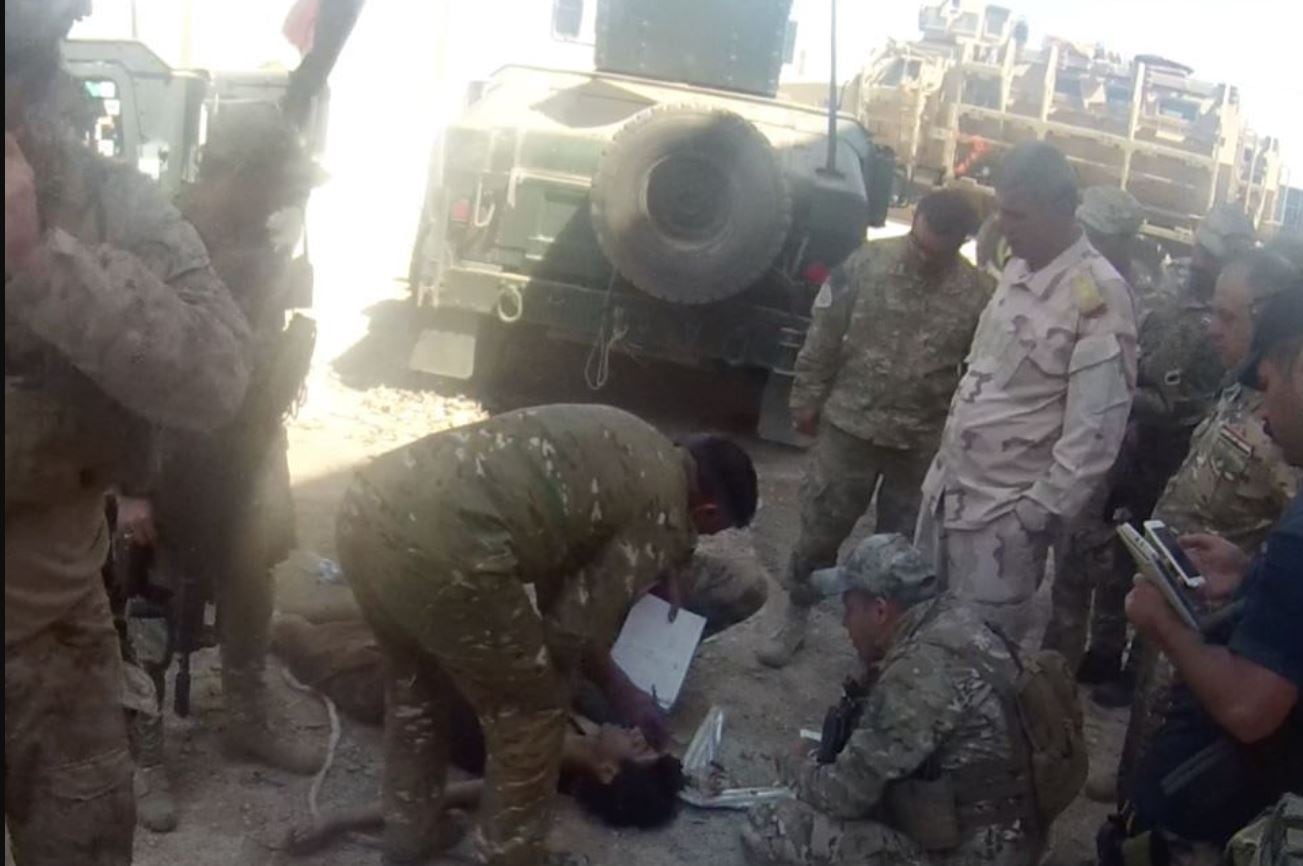
Parlatore expects a Marine Raider, Staff Sgt. Giorgio Kirylo, and two Iraqi leaders — Iraqi Emergency Response Division commander Maj. Gen. Abbas al-Jubouri and his aide, Col. Issa Kadhim — will testify that Gallagher didn’t kill the prisoner.
But the most important testimony might come from Scott, who had been monitoring the detainee before he died.
Reached Friday by Navy Times, he declined comment.
But it was Navy Times that first published concerns his Texas-based attorney, Brian Ferguson, raised about how NCIS had characterized an interview Scott had with authorities.
Investigative records, a letter to Navy officials and messages provided to Navy Times show that Scott told investigators that the Islamic State prisoner was nearly dead when brought into the compound and that his fellow SEALs began a series of procedures on the teenager that weren’t medically necessary.
That matched other documents provided to Navy Times that showed a number of medical procedures performed on the prisoner over the span of about 20 minutes.
They included a cricothyroidotomy — or “cric" — a simple and rapid surgical method for opening up a blocked airway by inserting a tube through an incision in the cricothyroid ligament, plus a trachea tube, at least two chest tubes and a Sternal Intraosseous Infusion, which bores through bone to reach veins when other IVs won’t work, records indicate.
That all could be medically necessary to save a man from death, but defense attorneys will paint a more macabre picture of the prisoner’s last moments and suggest that the detainee died long before Gallagher allegedly stabbed him.
“Once it was clear that the ISIS fighter was beyond saving, the platoon’s medic, SO1 T.C. Byrne, took over and began using the newly dead or nearly dead ISIS fighter as a training aid to practice performing medical procedures,” defense attorneys wrote in a May 26 motion to Rugh.
“The possibility that SO1 Byrne and other members of the team were performing, for skill development, medically nonindicated invasive medical procedures on a newly dead or dying ISIS fighter is significant for a number of reasons and should have been immediately disclosed to the defense,” they added.
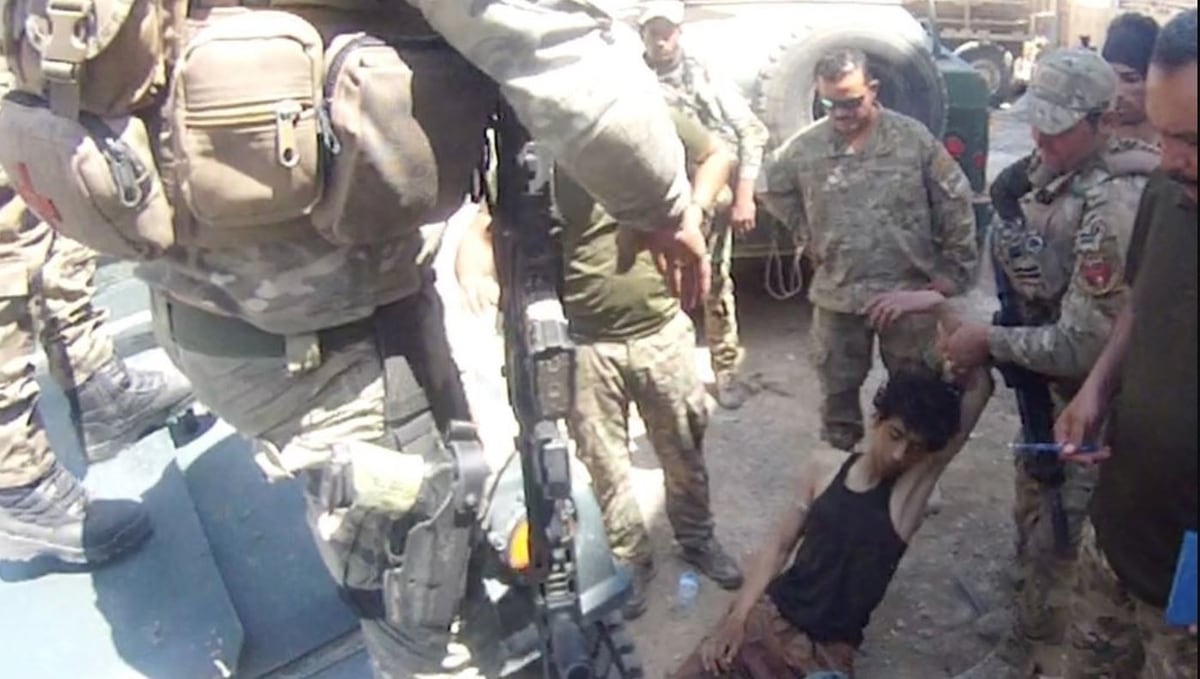
In their motion, defense attorneys alleged that several witnesses for the prosecution gave statements that were either inaccurately depicted by Warpinski in his reports “or inaccurately given out of fear that the truth would lead to charges against either SO1 Byrne or the witnesses themselves.”
But in his interview with NCIS and in motions filed by prosecutors, Byrne offered a different take.
He told investigators that the detainee arrived in the compound with a leg injury — the Iraqis said he’d been shot trying to escape a safe house after an airstrike destroyed it — and labored to breathe, possibly from “blast lung,” a condition that often afflicts patients who survive explosions.
Byrne “left the scene, and when he returned, he was surprised to find the prisoner dead,” prosecutors wrote.
If he repeats that in his sworn testimony, it will be Byrne and Miller against Scott, Kirylo, the Iraqi officers and possibly others.
How a jury of commissioned officers and senior chief and master chief petty officers weigh the credibility of their testimony could determine Gallagher’s fate.
Prine came to Navy Times after stints at the San Diego Union-Tribune and Pittsburgh Tribune-Review. He served in the Marine Corps and the Pennsylvania Army National Guard. His awards include the Joseph Galloway Award for Distinguished Reporting on the military, a first prize from Investigative Reporters & Editors and the Combat Infantryman Badge.
